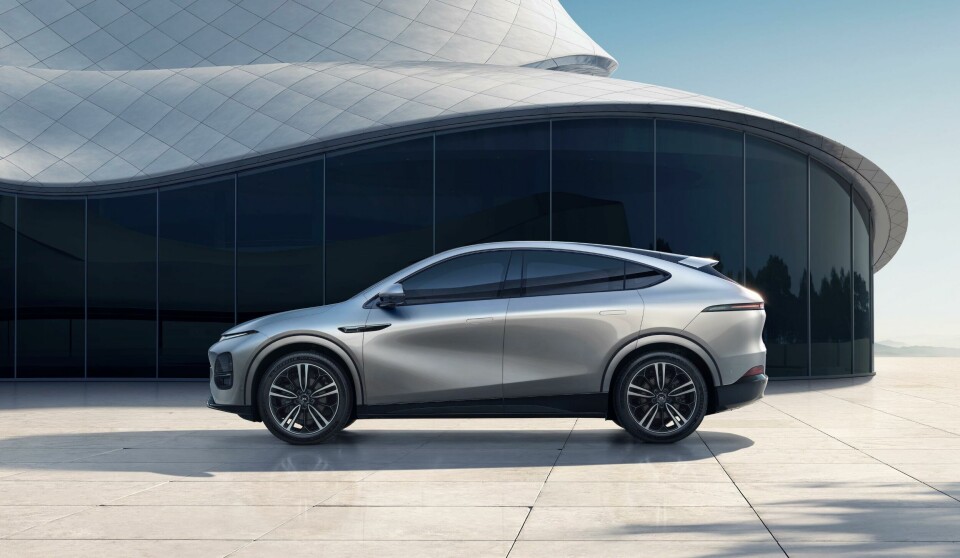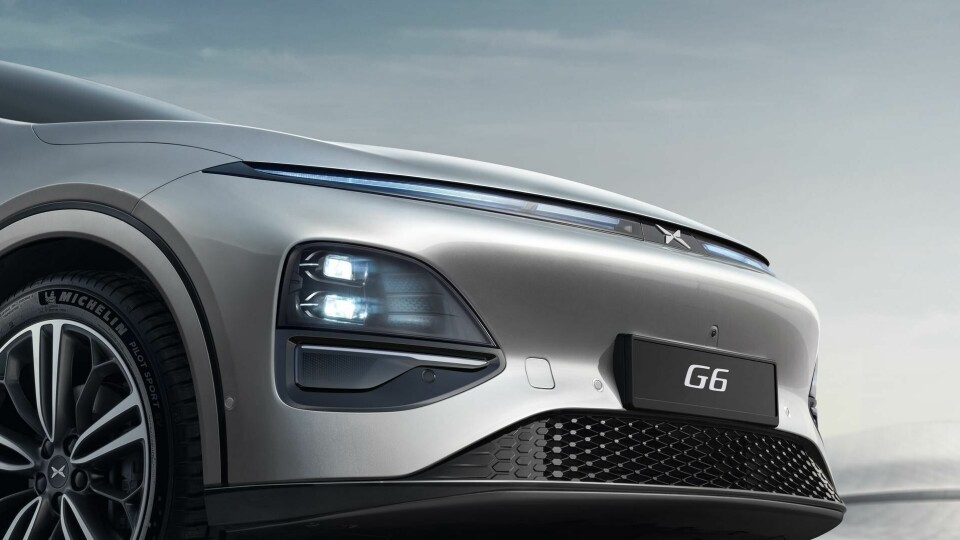
Design driven: Xpeng G6
A week with the G6 reveals an accomplished vehicle in its own right. However, this newcomer is let down by familiar UX issues present across the market
Xpeng – short for Xiaopeng and rhyming with “now pung” – is one of various Chinese brands to find its feet in Europe and the UK in almost no time at all.
An established brand in its home market, the company’s first offering over here is the G6, a large fastback crossover that aims to balance premium feel with wallet friendly pricing. Car Design News recently spent a week with the G6 and racked up several hundred miles in the process, dotting up and down motorways, country roads and even the cobbled streets of Soho in central London.
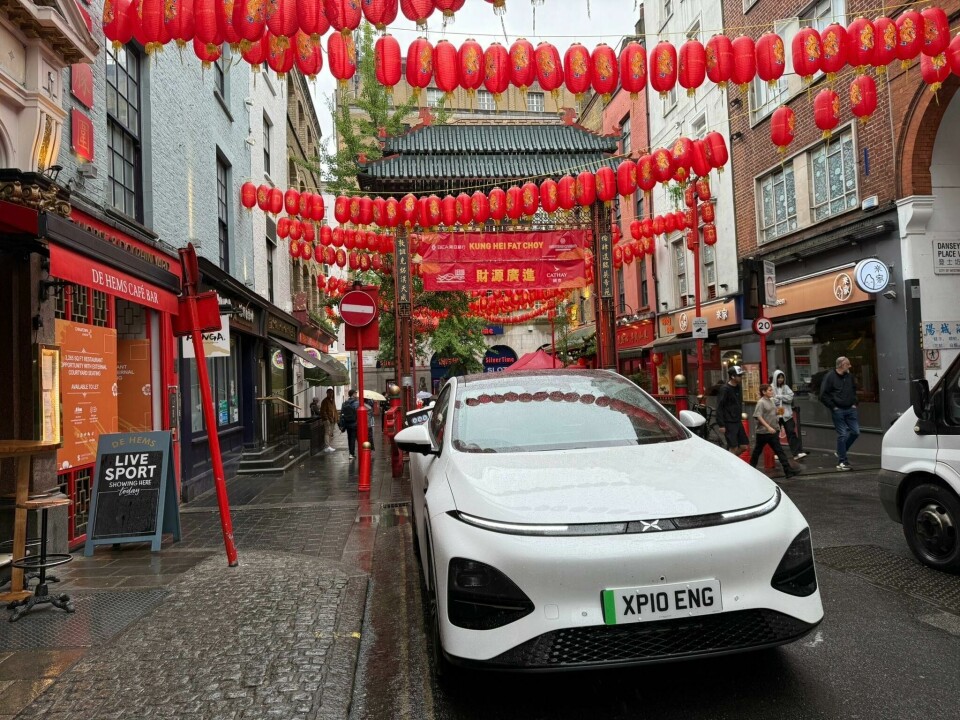
Xpeng in fact describes the G6 as an “Ultra Smart Coupe SUV” (USCSUV?) and is offered in standard and long range specification. Both send power to the rear wheels from a 66kWh or 87.5kWh battery pack, pushing 190kW (about 250bhp) or 210kW (280bhp) respectively and 440Nm of torque regardless.
The dash to 60mph is less neck snapping that most EVs and is by some degree a little tardy at 6.2 seconds even in with the punchiest powertrain. This is no bad thing, the G6 feels more drivable and the power delivery more linear. It is enjoyable on a day-to-day basis, and the odd squirt up a hill or dual carriageway lasts a little longer now at least.
It handles well. Approach a set of corners at moderate pace and there is plenty of grip, only giving way to understeer at particularly harsh turns. This is no doubt a combination of clever chassis and suspension tuning which does well to mask the car’s bulk, but also the sticky Michelin Pilot Sport EV tyres. RWD means the tail can give way quite suddenly, an experience far more alarming and out of character given the otherwise very approachable driving dynamics elsewhere. It is not fun, and you have been warned.
In our week of ownership the G6 was fondly referred to as ‘the spaceship’
Steering (adjustable like virtually everything else through a series of on-screen menus) can be tweaked to preference. Heavier for spirited driving, lighter when tying together right-angle turns when you get lost on the way to London’s Chinatown. The same can be done for brake pedal feel through different levels of regenerative braking, although we generally find one-pedal driving a little staccato. You’re either going or stopping.
Charging can be completed very swiftly at the right charger, but this of course comes at quite the expense. A trickle charger did well to had a chunk of range over the course of an afternoon, and overall the car appears to be rather conservative with its range calculations – absolutely a good thing. Not once did I question our ability to make it where we were going. Official figures list a WLTP range of 435km or 570km for the big battery, and DC fast charging between 10-80% as 20 mins. Seems about right. There is an app through which this and various other things can be tracked and managed, but for the sake of a week we didn’t bother.
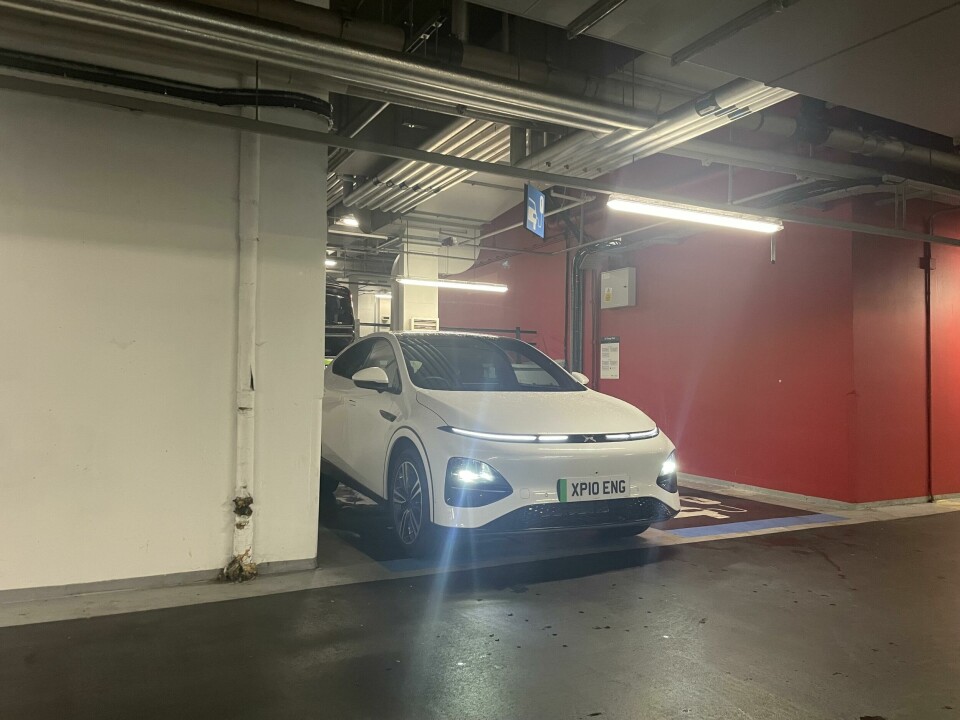
Visually it is quite a handsome effort. The long wheelbase, super short front overhang and stubby bonnet draw the eyes to the expansive DLO and csweeping roofline. Soft creates in the door panels give a hint of muscle at the wheel arches. Up front, the curve of the lower mask mirrors the bottom part of the X badge which bisects the horizontal light signature, while contrast black sections at each corner giving the effect of dramatic air scoops. These in fact house more lamps.
Clean surfacing, a stretched silhouette and Arctic White paintwork meant that for our week of ownership the G6 was fondly referred to as “the spaceship.” Door handles sit flush to the panel and the boot spoiler appears to float thanks to some clever CMF, which blends sections of the rear bodywork with the expansive dark-tinted sunroof. There is a distinct aero feel to the exterior.
First impressions of the interior were not brilliant and touch on some of our earlier explorations of percieved quality. The notion of ‘new car smell’ took a different meaning with the G6 as we were met by a strong waft of glue, and driving away it became clear that the car’s default ‘creeping’ noise is an annoying whine. Like a mosquito in your ear. Other passengers used the analogy of a Stuka dive bomber, a noisy bathroom extractor fan or a distant air raid siren. On ingress the seat moves up and in, and the opposite when getting out.
The touchscreen is excellent when at a stop, with buttons responsive and resolution crystal clear. There are shortcuts or prompts in many places that eliminate the need to hunt around too much, and navigation and music all works as it should. Once connected, music will autoplay and if guidance has already been set on your phone, the screen will load up automatically. Driver assistance alerts come up as prompts, for example – would you like to turn this off? (Yes, we would.)
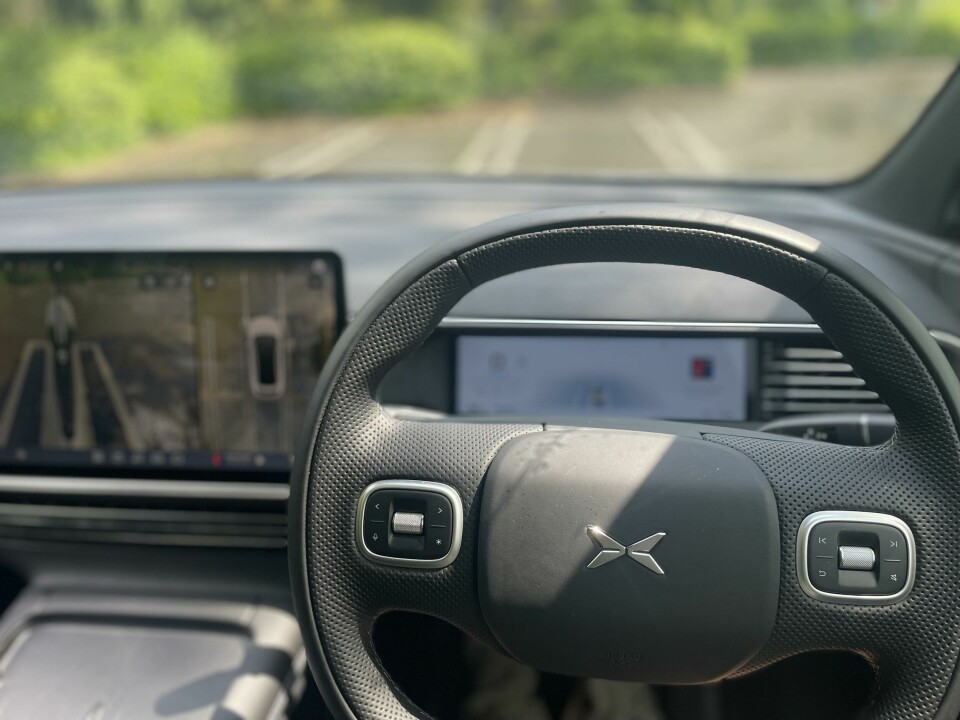
On the road the screen becomes a little infuriating at times, particularly when getting to grips with the HVAC settings. A few attempts eventually trains the process, but it is not intuitive and there are too many taps and swipes on the screen. Static buttons and dials would be far more effective.
There is also no obvious hazard button, vital in times of danger but more often to thank other drivers. We did appreciate the smaller digital display for the instrument cluster, which is positioned nicely to fill the upper gap in the steering wheel and very clearly shows all vital and non-vital information while driving.
It seems like a good time to hit the UK and Europe at a time where EVs are now far more broadly accepted (and desired) by the masses. With powertrains and software also very much a level playing field, it is now almost a case of filtering by price low-to-high. UK pricing starts at £39,990, narrowly avoiding the additional annual road tax of £425 – via the Expensive Car Supplement (ECS) – imposed on vehicles costing over £40,000 from new.
Design may play a part in sales, but if the industry was honest with itself there has never been a broader spread of similar designs within a set typology. Electric crossovers are clearly the play – Nissan just relaunched the Leaf as such – and with the G6, Xpeng has a strong contender in the premium mix. With no clear brand differentiation, at least to this writer’s eyes, just get comfortable with people asking: “What is it?”
Chinese carmakers are back with quality products and technology on par with (or better than) western equivalents
Now to the thinly-veiled metaphor of the G6 parked in London’s Chinatown district (getting in, and out, revealed an excellent turning circle.)
Today, Chinatown is a hotbed of activity, loved by locals and tourists alike and very much a cornerstone to the city’s cultural wealth. But its current form is the result of an evolution, moving figuratively from its original spot in Limehouse – four miles away as the crow flies – which suffered greatly from heavy shelling during the Blitz. Chinatown contracted as a result.
Over several decades that followed, the Soho-based community that thrives today gradually came to be. London’s new Chinatown. A slow burner, but very much a success story. The rise of Chinese EV brands in the UK might serve a fair comparison. Earlier attempts to crack the British market were not a success, but after a short spell ‘away’ Chinese carmakers are back and have shaken past aspersions. These are quality products with all the latest tech and performance on par with (or better than) western equivalents.
Data from the UK’s Society of Motor Manufacturers and Traders (SMMT) found that around 100,000 new Chinese-made cars were sold here in 2024, a figure that has held relatively steady over the past few years. With the concept of ‘China speed’ revolutionising how designers work across the industry, it might also be argued that the success of Chinese brands is being felt on a much broader scale this time round.

